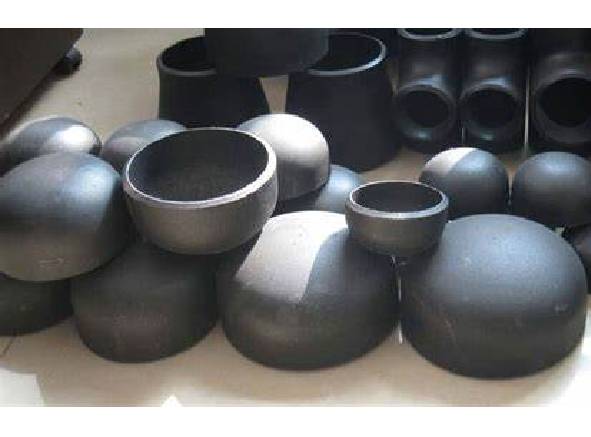-
Cangzhou Yulong Steel Co., Ltd.
-
Phone:
+86 13303177267 -
Email:
admin@ylsteelfittings.com
- English
- Arabic
- Italian
- Spanish
- Portuguese
- German
- kazakh
- Persian
- Greek
- French
- Russian
- Polish
- Thai
- Indonesian
- Vietnamese
- Zulu
- Korean
- Uzbek
- Hindi
- Serbian
- Malay
- Ukrainian
- Gujarati
- Haitian Creole
- hausa
- hawaiian
- Hebrew
- Miao
- Hungarian
- Icelandic
- igbo
- irish
- Japanese
- Javanese
- Kannada
- Khmer
- Rwandese
- Afrikaans
- Albanian
- Amharic
- Armenian
- Azerbaijani
- Basque
- Belarusian
- Bengali
- Bosnian
- Bulgarian
- Catalan
- Cebuano
- China
- China (Taiwan)
- Corsican
- Croatian
- Czech
- Danish
- Esperanto
- Estonian
- Finnish
- Frisian
- Galician
- Georgian
- Kurdish
- Kyrgyz
- Lao
- Latin
- Latvian
- Lithuanian
- Luxembourgish
- Macedonian
- Malgashi
- Malayalam
- Maltese
- Maori
- Marathi
- Mongolian
- Myanmar
- Nepali
- Norwegian
- Norwegian
- Occitan
- Pashto
- Dutch
- Punjabi
- Romanian
- Samoan
- Scottish Gaelic
- Sesotho
- Shona
- Sindhi
- Sinhala
- Slovak
- Slovenian
- Somali
- Sundanese
- Swahili
- Swedish
- Tagalog
- Tajik
- Tamil
- Tatar
- Telugu
- Turkish
- Turkmen
- Urdu
- Uighur
- Welsh
- Bantu
- Yiddish
- Yoruba

Dec . 25, 2024 02:54 Back to list
API 5L X42 Pipe Specifications Overview and Key Features for Pipeline Industry
API 5L X42 Pipe Specification
The API 5L X42 pipe specification is a crucial standard in the oil and gas industry that pertains to the manufacturing and testing of welded and seamless steel pipes. This specification is established by the American Petroleum Institute (API) to ensure quality and safety in pipelines that transport oil, natural gas, and other fluids. The API 5L standard encompasses various grades and specifications, among which X42 is widely recognized for its robustness and reliability.
Understanding API 5L
API 5L was first issued in 1966 and has undergone numerous revisions to adapt to evolving industry requirements. It covers pipes that are used in oil and gas transmission applications, focusing on criteria relating to strength, corrosion resistance, and weldability. The specification is designed to regulate the manufacture of steel line pipes that meet the necessary criteria for the transportation of various fluids and gases under high pressure and temperature.
X42 Grade Characteristics
The 'X' in X42 denotes the pipe's minimum yield strength, which is 42,000 psi (pounds per square inch) or approximately 290 MPa (megapascals). Pipes manufactured under the X42 classification come in various diameters and wall thicknesses, ensuring versatility in application. The steel used for X42 pipes generally falls under the category of carbon steel, designed to withstand harsh environmental conditions, making it suitable for use in both onshore and offshore pipeline projects.
One of the key advantages of X42 pipes is their excellent combination of strength and ductility. These properties are critical in pipeline installations where the structure must endure considerable external forces, such as those from soil, temperature fluctuations, and internal pressures. The X42 grade exemplifies a balance between mechanical properties and weldability, allowing for efficient and safe installation.
Manufacturing Process
The manufacturing of API 5L X42 pipes involves rigorous processes that include steel making, forming, heat treatment, and testing. The steel is often produced using electric arc furnaces or basic oxygen furnaces, followed by hot or cold forming methods. The pipes may be manufactured using either seamless or welded methods, with each process providing distinct benefits.
api 5l x42 pipe specification

Seamless pipes are produced from solid round billets, resulting in a pipe with a continuous and uniform structure, which enhances strength and durability. On the other hand, welded pipes are made by rolling steel plates or coils into a tubular shape and then welded along the seam. While welded pipes can be produced more economically and in larger sizes, they require stringent quality control to ensure the integrity of the weld.
Testing and Quality Control
API 5L X42 pipes undergo extensive testing to verify their mechanical properties and compliance with established standards. Common tests include tensile strength tests, impact tests, yield strength tests, and non-destructive tests such as ultrasonic or radiographic inspection. These evaluations ensure that the pipes perform as intended under operational conditions, minimizing the risk of failure during service.
In addition to mechanical testing, chemical composition analysis is also conducted to ensure that the material conforms to specified standards. The carbon, manganese, phosphorus, and sulfur content are particularly important in influencing the steel’s properties and behavior during service.
Applications of API 5L X42 Pipes
The versatility of API 5L X42 pipes allows them to be used in various applications within the oil and gas sector, including but not limited to
1. Transmission Pipelines Used for transporting oil, gas, and water across long distances. 2. Distribution Networks Employed in the local distribution of natural gas to residential and commercial consumers. 3. Offshore Projects Suitable for subsea pipelines that require high strength and corrosion resistance to withstand marine environments. 4. Industrial Applications Utilized in chemical processing, power generation, and other industrial processes.
Conclusion
The API 5L X42 pipe specification remains a cornerstone in the oil and gas industry, contributing to secure and efficient pipeline systems. Its blend of strength, ductility, and resistance to harsh conditions ensures that it plays a vital role in compatible energy transportation solutions. As the industry continues to evolve with modern technologies and rigors, the significance of adhering to such specifications will be paramount in sustaining operational reliability and safety.
Latest news
-
ANSI 150P SS304 SO FLANGE
NewsFeb.14,2025
-
ASTM A333GR6 STEEL PIPE
NewsJan.20,2025
-
ANSI B16.5 WELDING NECK FLANGE
NewsJan.15,2026
-
ANSI B16.5 SLIP-ON FLANGE
NewsApr.19,2024
-
SABS 1123 FLANGE
NewsJan.15,2025
-
DIN86044 PLATE FLANGE
NewsApr.19,2024
-
DIN2527 BLIND FLANGE
NewsApr.12,2024
-
JIS B2311 Butt-Welding Fittings LR/SR 45°/90° /180°Seamless/Weld
NewsApr.23,2024











